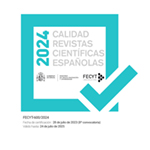Cómo convertir el aspecto en tiempo: traducción del zapoteco al español
Resumo
En este trabajo se plantea la problemática de traducir una narración de una lengua que codifica en el nivel flexivo fundamentalmente valores aspectuales (zapoteco) a una lengua que lo que codifica flexivamente es fundamentalmente valores temporales (español). Como resultado de lo anterior, un traductor no profesional puede producir ciertas construcciones anómalas desde el punto de vista de la lengua meta (v. gr. una serie de oraciones traducidas con flexión de pretérito imperfecto seguida de una serie de oraciones flexionadas en presente, sin que haya una aparente motivación para el cambio flexivo). Se argumenta que tales fenómenos no deben verse simplemente como errores atribuibles a una escasa competencia del traductor en la lengua meta, sino que pueden verse como el resultado de la tensión generada entre lo que cada lengua codifica y lo que de cada lengua se infiere.Downloads
##submission.format##
Licença
La revista Estudios de Traducción, para fomentar el intercambio global del conocimiento, facilita el acceso sin restricciones a sus contenidos desde el momento de su publicación en la presente edición electrónica, y por eso es una revista de acceso abierto. Los originales publicados en esta revista son propiedad de la Universidad Complutense de Madrid y es obligatorio citar su procedencia en cualquier reproducción total o parcial. Todos los contenidos se distribuyen bajo una licencia de uso y distribución Creative Commons Reconocimiento 4.0 (CC BY 4.0). Esta circunstancia ha de hacerse constar expresamente de esta forma cuando sea necesario. Puede consultar la versión informativa y el texto legal de la licencia.









